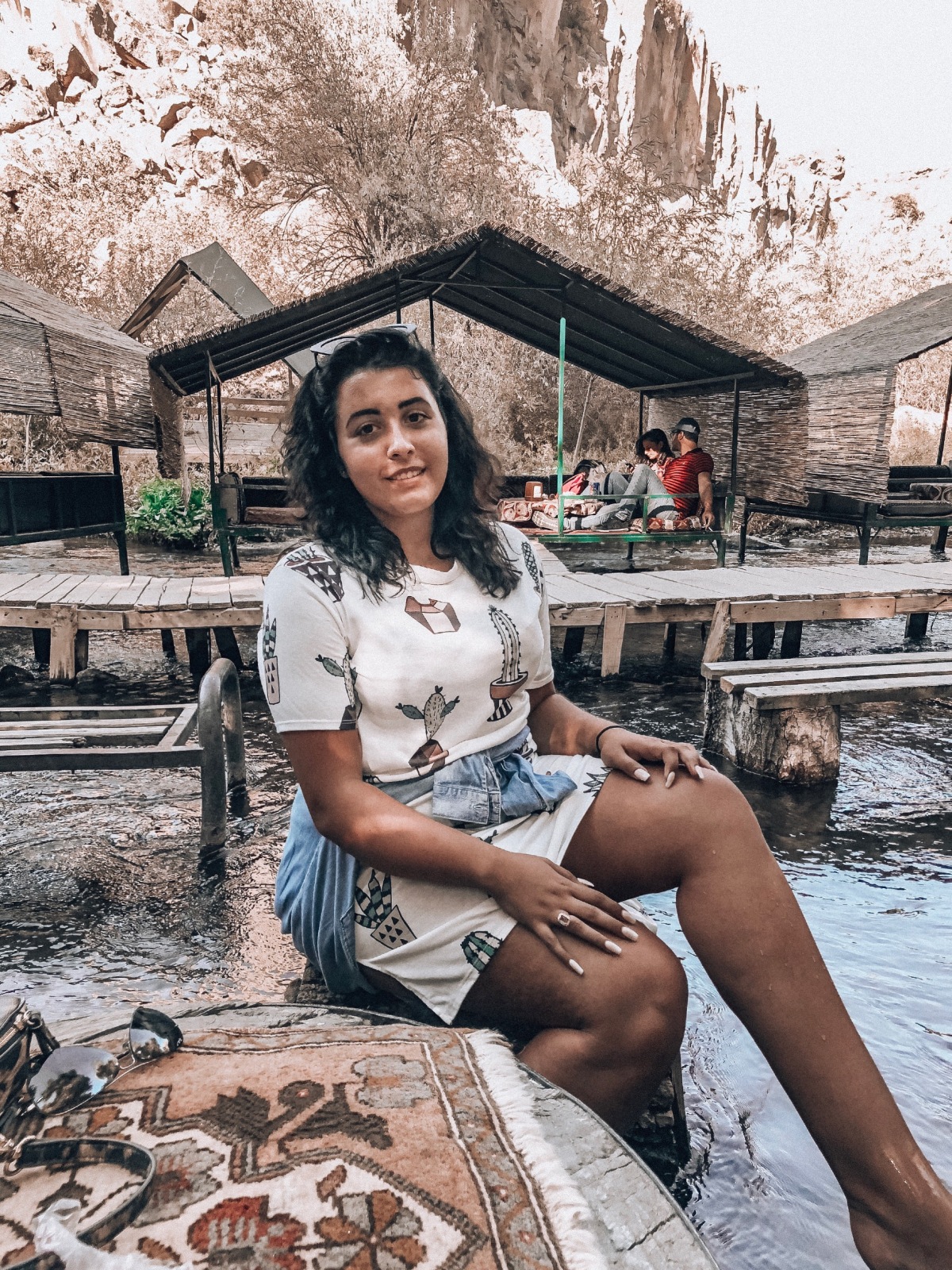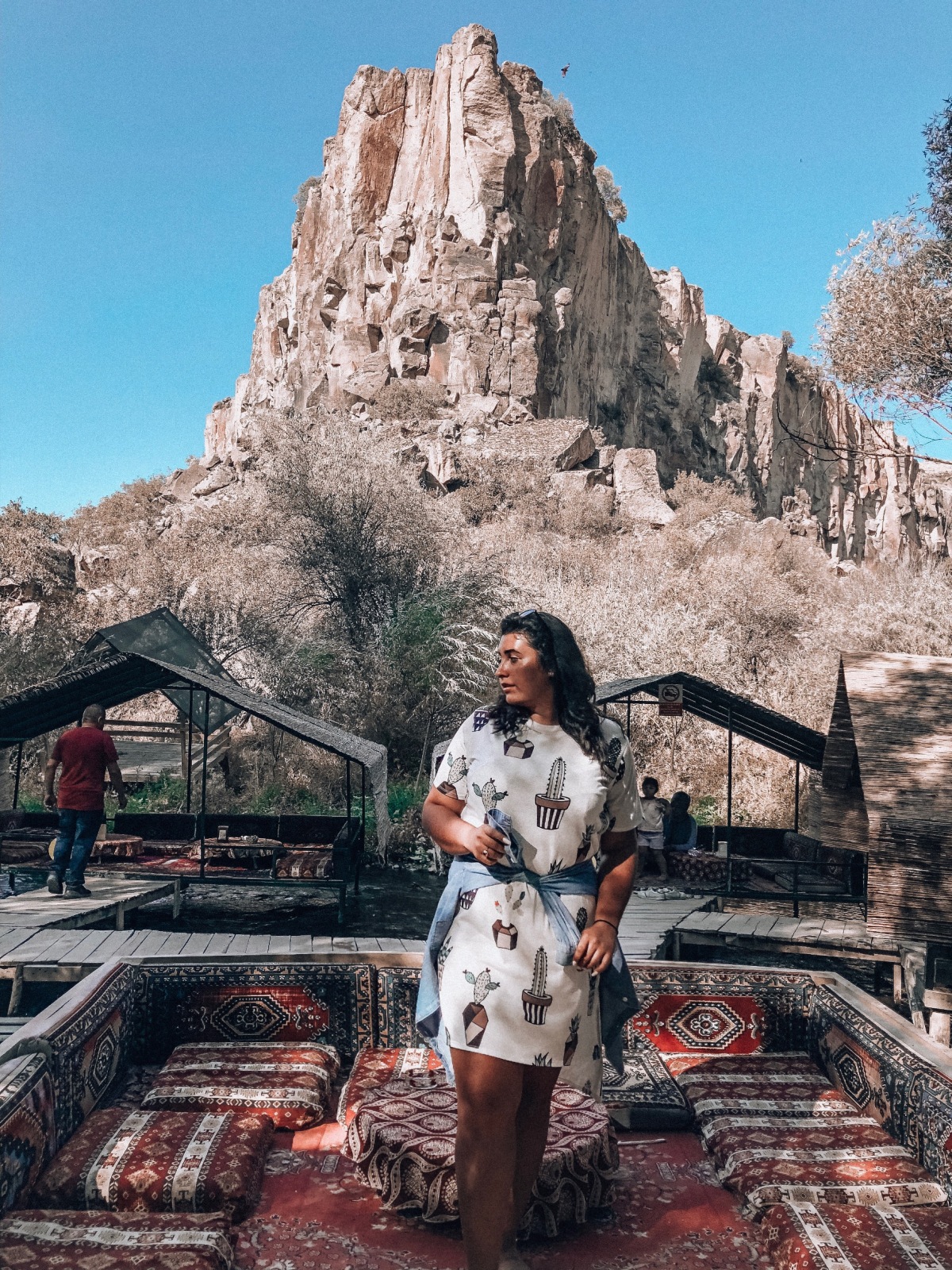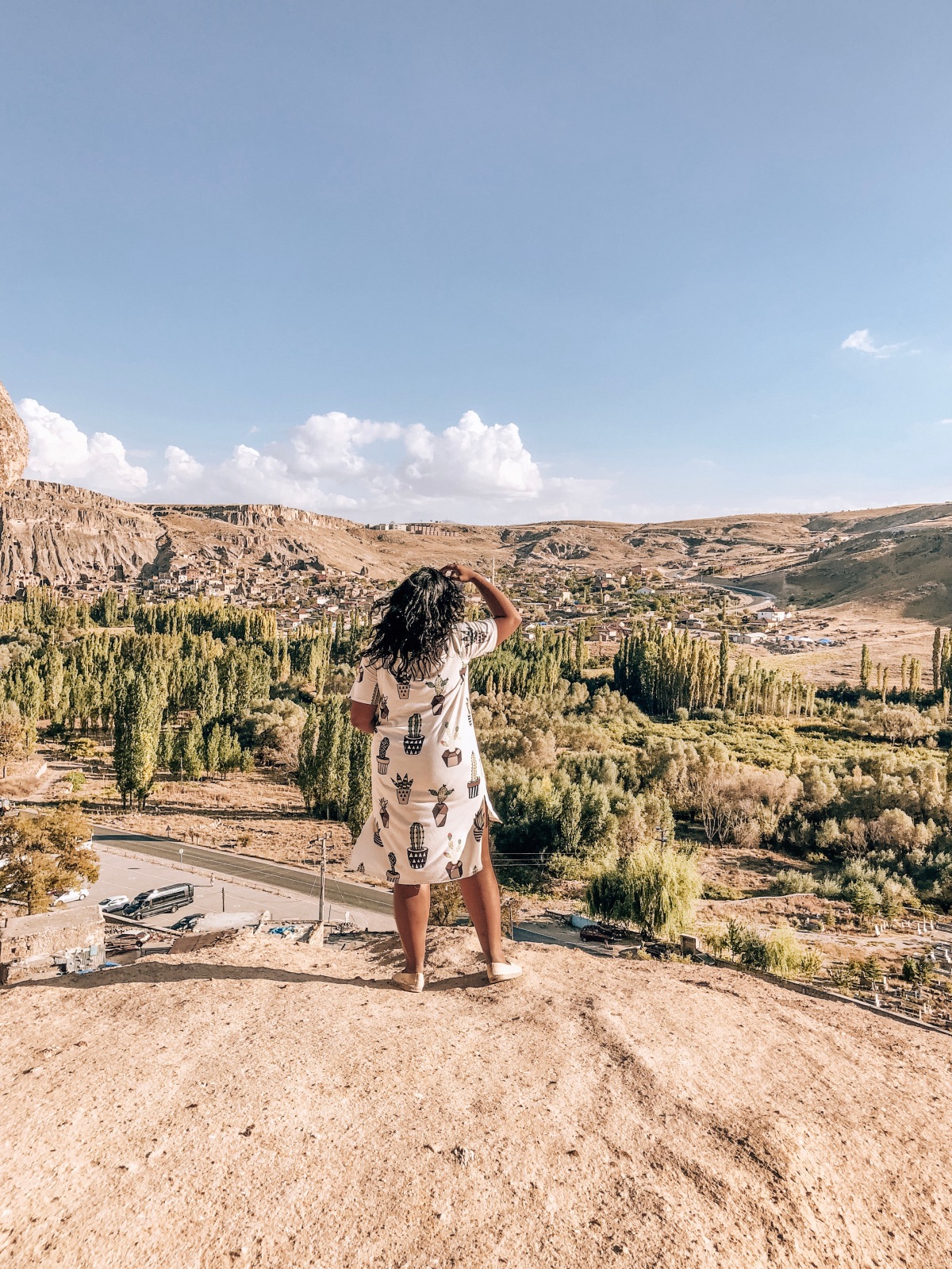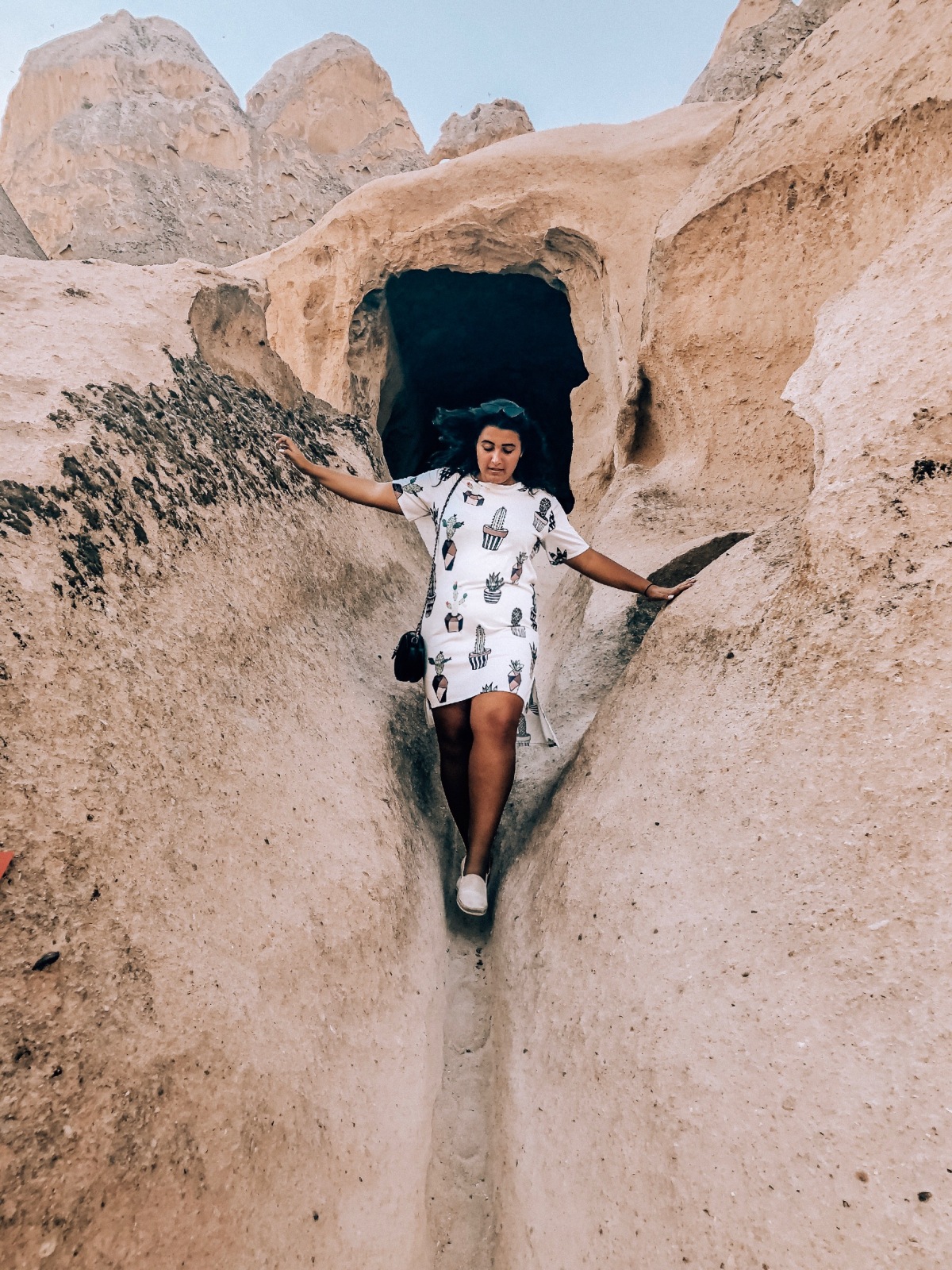In Cappadocia there are two main tours available; green or red. We decided to go on the green tour mainly because it was the same price as the red but you were on it for much longer… little did we know that this was because you spend all day pretty much walking and climbing. The tour company picked us up from our hotel and we were off. Whilst driving our guide started telling us all about Cappadocia and the history of the city.
Cappadocia as a region was formed over 60 million years ago by the erosion of layers or lava from a few different surrounding mountains mixed in with the help of some wind and rain. Historians aren’t 100% sure on where the name actually came from but they say it’s probably from the word Katpatuka meaning land of beautiful horses in Hittite. The history of Cappadocia spawns all the way from 2500 BC Hatti culture all the way through Assyrians, Phrygians, Lydians, Romans and Christians to the Ottoman Empire where an end to the Icon movement was made. In the 3rd century, Christians came to Cappadocia which made the area a hub of education. Pressure on the christens increased in the year 303 but Cappadocia was the ideal place for them as they were able to carve deep down into the soft volcanic rocks and create themselves an underground safe haven against the Roman soldiers. The 4th century is known as the Fathers of Cappadocia but the importance of the region was at its peak when Leon III, emperor of Rome banned icons. This meaning that some of the people who were pro-icons started to take shelter in the region. The Iconoclasm movement lasted more than 100 years meaning these people lived underground for that long! During all of this the Arab raids also started to affect the Christians regions in Anatolia, from Armenia to Cappadocia. People escaping the invasion and coming to the region changed the styles of the churches completely. In the 11th-12th century Cappadocia was passed onto the Turks meaning the Ottoman Empire were in control. The last of the Christians migrated from Cappadocia between 1924-26 due to the exchange of Treaty of Lausanne, leaving behind beautiful architectures we can discover today.
There are many “must see” areas in Cappadocia for example the Fairy Chimneys which were named this by the locals to scare off visitors as they told them evil fairies would be living in the peaks of the land so they shouldn’t venture there. Locals lived in these caves up till 1952 when there was an earthquake and it was no longer safe for them to do so due to the caves being made from only volcanic ash. However more recently people have been buying the land and making it stronger to build hotels for tourists.

Our first stop on the tour was a jeweller as they had discovered a special gem that reacted to the light meaning it could change to 7 different colours depending on the type of light hitting it. I thought this was really amazing and ended up buying a ring and to this day I am still amazed at how it changes colour. Inside its emerald green, sunlight makes its bright pink, dark lighting makes it amber. It’s amazing. Our second stop was just opposite, Pigeon Valley. Throughout Cappadocia you can see that all the caves have little holes in them, these were used as homes for pigeons. Up till 1960 Cappadocia made its money from potatoes and they used pigeons to fertilise them. As the region is all on volcanic ash it was very hard to grow crops so they ended up breeding pigeons only to use for fertilisation; not to eat or as messenger pigeons as some may believe. There was a tourism boom in the 60’s meaning the pigeons were no longer needed, their main income became tourism and it still is to this day.

Our next stop was pretty much the main attraction. It was one of the entrances to the underground cities where people lived. This specific one was 80 stories down however they were only able to reach 12 and it was only safe for us to travel down 8. If you have any medical issues or anything id honestly not advise the green tour as there is a lot of walking and climbing. When you enter you go down one story into the “kitchen” the only way to tell that they used this area as a kitchen was that it was right by a ventilation point. As you go further and further into the caves and tunnels everything gets darker and tighter. The next floor was the winery, as it was the Christians that used this place to hide from the romans they used it to make wine, when the Turkish took over it then changed into making grape jam. We got to a point where all you could see were tunnels, our tour guide said that some of these tunnels were direct from houses, some were to be able to s=escape back outside but most were traps in case the Romans came in then they would fall and die. We came across one tiny tunnel, where you crouch down and go down 4 stories. These tunnels were about child sized; very small and tight. The tunnels were made so tiny so that in case a Roman or Arab solider got through they would kill him and he would block the path for all others. When you’re running done you have to yell to make sure no one is coming up as you can barely fit one person at a time in there. (Side note: all these tunnels and caves were carved with stones, it took decades!) When we reached the 7th floor we all felt like we were about to die which was ironic as we had reached the church; this floor was carved out to look like a cross. We went down to the final floor which surprisingly smelt pretty bad which made sense when we found out they used this area as a morgue. It was when we were here that I realised all that running down we did in the tiny tunnels meant that we had to run back up them. So for some stupid reason I decided to go first and with my bad back I felt bad for slowing down others so I literally sprinted up all the stairs, got to the top and nearly passed out. To my surprise, everyone else was taking their sweet time so I got a chance to sit outside and enjoy the boiling hot midday sun.

Our next stop was lunch by the river followed straight after with a lovely mixed terrain 3.5km walk through a national park. Don’t get me wrong, it was lovely but we were all so exhausted. We stopped off at a little water café for 15 minutes where you could walk into the stream and sit on logs which was actually amazing as the water was freezing and everyone’s feet were swollen. Whist walking you could see little caves which were churches back when the Christians lived there, all shaped like crosses and covered in beautiful paintings which still looked pretty amazing telling the story of Christ. Coming towards the end of the walk we realised we were in some sort of canyon and that our bus was already waiting for us at the top… we had to once again run up 300 stairs and catch our bus.

This is when we thought we were going to be driven back to the hotel; nope. Our final destination was Selimi Monastery; the biggest one in Cappadocia. All the paths were once again tiny walk ways made from camels and at some points you had to jump from boulder to boulder. Once we were 200m up the view was amazing. We took a minute to take it in and then were left to discover and climb higher if we wished. It was just so unbelievable that people made these into schools and churches and bedrooms all by just carving into rock formations. We were given 20 minutes to explore but my friend and I decided to slowly head back as the way up was so difficult we didn’t want to have to rush our journey down. Of course, once we were at the bottom my back was killing me and I had grazed my legs all against the walls.

Our tour guide then took us to a little shop where they sold all different types of Turkish delight and Lokum so we could relax a bit before we were driven back to our hotel. Even though it was exhausting and that in total we had climbed 68 floors I did actually have an amazing time! I would 100% recommend this tour but make sure you have trainers on and like gym kit… not espadrilles and a cute dress.

xx